#echidna mythology
Text



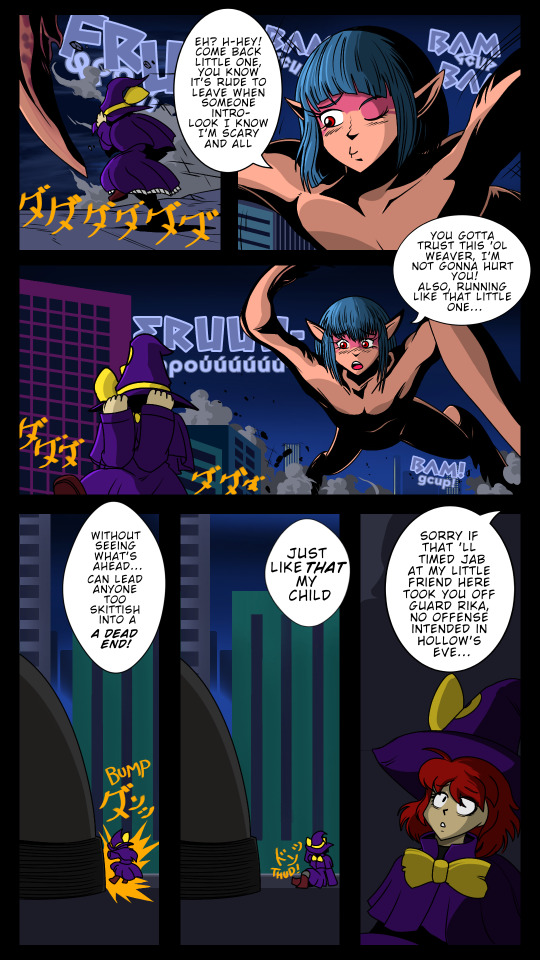

PART 3: "Coming Soon"
PREVIOUS PART:
#artists on tumblr#gt/tiny#giantess#gttiny#gt tiny#fanart#shin megami tensei#smt#真・女神転生#marisa kirisame#touhou project#touhou#pc 98#gentle giant#demon#arachne#echidna#echidna mythology#jack frost#abbadon#forneus#dullahan
18 notes
·
View notes
Text
In the snail-shell centre of the labyrinth, the Minotaur made his prayer.
“I can’t,” said Echidna. “I’m sorry, but I can’t. I can’t give you any protection.”
The Minotaur said nothing. Lacking anything else, he had snapped his own horn as an offering. Blood dribbled down his face and blinded him in one eye.
“I have nothing to give you,” said Echidna. “I have nothing, do you understand me? Nothing.”
Unshaking hands held up the horn. Offer. Offer.
“Stop that,” said Echidna. “You aren’t my child. I don’t owe you anything.”
Offer. Offer.
A ragged sigh cut through the gloom. Slender hands took the horn.
There was a. Sound. The horn had turned into a long strip of rag, which Echidna held up to the Minotaur’s mouth.
“Spit,” she said.
The Minotaur obeyed. She wiped the drying blood from the fur around his eye, and then wrapped the rag around his bleeding stump of horn.
“You are mine,” she said. “You are doomed. You will die and I will remember you as mine for centuries of heartache. I will remember you as I remember my Chimera’s laughter, my Hydra’s temper, and wiping tears from the eyes of my Cerberus.”
Gleaming eyes looked into his. “You’ve given me a terrible burden,” she said. “And so help me, I will carry it forever.”
The Minotaur closed his eyes and sagged with relief.
#greek mythology#minotaur#echidna#short story#microfiction#narrativia#not my usual stuff#i’m allowed to write angst!#i’m a fully realized creation!
2K notes
·
View notes
Text
Greek monster myths (1)
Various mini-articles loosely translated from the French « Dictionary of Feminine Myths », under the direction of Pierre Brunel. (You could also translate the title as “Dictionary of Female Myths” – the idea being all the myths centered around women)

Article 1: Gorgô
[Note: this mini-article is distinct from the mini-article about “Gorgons”]
The appearance of Gorgô, at the end of the eleventh chant of the Odyssey, is meant to cause fright – not just to Odysseus himself who is just done with invoking the dead, but also to the audience hearing this rhapsody (the Phaeacians listening to Odysseus’ tale), and to the very listener of the Homeric poem. Gorgô forms the dominant peak of this “evocation of the dead” (nekuia), she is the “chlôron déos”, the “green fear”. Odysseus’ mother, Anticleia, just disappeared back again nto the Hades – the hero wishes to summon other shades, such as those of Theseus and of his former companion Pirithous, “but before them, here is that with hellish cries the uncountable tribes of the dead gathered”. And Odysseus adds: “I felt myself becoming green with fear at the thought that, from the depths of the Hades, the noble Persephone might sent us the head of Gorgô, this terrible monster…” (633-635). It is barely an apparition, it is the possibility of an appearance, but it is enough to terrorize the living.
Jean-Pierre Vernant, in his work “La Mort dans les yeux” (Death in the eyes), establishes the link which ties together Gorgô and Medusa. Because Gorgô is more than a singular unification of the three Gorgons: she is a superlative form of Medusa, she is what happens when her petrifying gaze survives beyond death. By studying the depictions of Gorgô in ancient statues, Vernant establishes two fundamental traits: the faciality, and the monstrosity. He explains that “interferences” take place “between the human and the bestial, associated and mixed in diverse ways”. Maybe Gorgô is, as Vernant suggests, “the dark face, the sinister reverse of the Great Goddess, of which Artemis will most notably be the heir”. But Gorgô is also placed in the function of watchful guardian of the world of the dead, a world forbidden to the living. The mask of Gorgô expresses the radical alterity of Death and the dead.

Article 2: The Graeae
Daughters of Keto and Phorkys (they are thus also called “The Phorcydes”), sisters of the Gorgons, these divinities of shadows, which were born as elderly women and doomed to share one eye and one tooth for all three, appear exclusively in the tale of Perseus and Medusa.
The most ancient mention of the Graeae comes from Hesiod’s Theogony, which only counts two of them and names them Pemphredo and Enyo (Enyo was also the name of a goddess of war within Homer’s Iliad). The third of the sisters appears within a fragment of the Athenian logographer Pherecyde: Deino (“The Dreadful”), later called Persis by Hyginus (in his “Preface to fables”). Other authors, like Ovid, prefer to stick with two Graeae. Hesiod makes a quite flattering portrait of them: he makes them elegant goddesses with a “beautiful face”, even though they were “white-haired (understand “having white hair due to old age”) since birth”. And while their very name means “old women”, the Antique iconography actually follows the Hesiodic model: the depictions of the sisters as disfigured by the effects of time are quite rare… At most the artists will just put a few wrinkles. These mysterious hybrids between youth and old age, virginal seduction and sinister ugliness, finds an echo within a few lines from Aeschylus “Prometheus bound”: “Three ancient maidens, with swan bodies, that share a single eye and a single tooth, and who never receive a look from the shinng sun or the crescent of the night.” Aeschylus had an entire tragedy written about them (Phorcydes) which was unfortunately lost – but Aristotle wrote about it in his “Poetics” and implies that the play insisted on their monstrous aspect, placing them within the legendary area known as “the gorgonian fields of Kisthene”, and closely associating them with their sisters, of which they form a reversed image. Indeed, the Gorgons have a very powerful eyesight which no mortal being can face, while the Graeae have an extreme form of blindness. This trinity of women, old by nature, can also be understood as the antithesis of the three Charites, the Graces which embodied eternal youth.
The Graeae seems to have only a role within the myth of Perseus. And, outside of a few details, this legend does not change much from Pherecyde to Ovid’s Metamorphoses, passing by Lycophron, Apollodorus’ Bibliotheca, and Hyginus’ Astronomy. In all those versions the Graeae are the jealous keeper of the secret path that leads to the Gorgons, and Perseus must steal their eye in order to obtain the knowledge needed to reach Medusa. However, Pherecyde did change an element: according to him the Graeae do not protect the path leading to the Gorgons, but rather the path leading to the nymphs that hold the magical items Perseus needs to fight Medusa.
Due to their limited presence in Greek mythology, the Graeae have quite a poor cultural posterity. In the 19th century Goethe will remember them: in his “Second Faust”, Mephistopheles appears under the guise of “Phorkyas”, a monster with only one eye and one tooth. In the world of paintings, Edward Burne-Jones, who created a true “Perseus cycle”, had a strong interest for them: he worked for a very long time on a painting of the Graeae. Their face is barely visible, but the cloth that wraps itself around their body is menacing ; they are within an arid desert, under a dark sky heavy with clouds – they perform a sinister dance, in a mockery of the Graces. Perseus comes to steal their eyes, and the grey color that invades all the nuances of the picture symbolizes the unique presence of those strange crones, both disquieting and pitiable.

Article 3: Echidna
Echidna, “the viper”, is according to Hesiod the daughter of Phorkys and Keto, themselves born of Pontos, the Sea, and Gaia, the Earth. Echidna’s sisters are female monsters like her: the Graeae, and the Gorgons. Hesiod describes her as having half of the body of a “fair-cheeked nymph”, while the rest of her body is the one of an enormous, big, cruel, spotted and terrible snake which “lies within the secret depths of the divine earth”. Echidna as such belongs to this large mythological family of snake-women, of which the most famous case in France is the fairy Mélusine. But unlike Mélusine, Echidna can never leave the snake-half of her body, and thus a better French heir would be Marcel Aymé’s depiction of the vouivre with her cohort of vipers.
Theodore de Banville, when he imagines Hesiod scolding him for sanitizing Classical mythology, makes of Echidna the symbol of the archaic mythology: he tells him that he is “making a toy out of the history of the gods” by depicting Love as “a sweet child, free of carnivorous appetites, ignored by the Furies and by bloody Echidna”.
Echidna precisely appears as a being led by an amorous desire within Herodotus’ tales, that he claims to have collected among the Greeks of Pontus Euxinus: as Herakles was sleeping, Echidna steals his horses away. She only agrees to give them back if he sleeps with her. When Herakles leaves her, she tells him that she will bear three sons from their union. He advises them to only keep with her one that would be able to bend a bow just like him, and to force the others to leave. She does that, and this favorite son is supposed to be the one that created the Scythian people. This meeting between Herakles and Echidna might be derived from the famous encounters between Herakles and three of Echidna’s other children: the Nemean Lion, the Hydra of Lerna, and Cerberus.
In Aeschylus, Orestes compares his mother, Clytemnestra, to “a horrible viper”. Sophocles has Creon call Ismene, which he believes to have helped Antigone, “a viper that slid in my house against my will to drink my blood”. These examples show a link between the Ancient metaphorical speech, and the mythological allusions. Indeed, only the context can allow us to determine if these authors meant “viper” as a common name, or as a proper name: as “Viper”, “Echidna”. But it confirms the idea that, in Ancient Greece, Echidna is a monster born of an archaic fear of the women, and embodying their supposed perfidy.
#greek mythology#graeae#gorgon#gorgo#medusa#echidna#greek monsters#female monsters#ancient greek monsters#greek myths
79 notes
·
View notes
Text
Echidna, the mother of monsters.
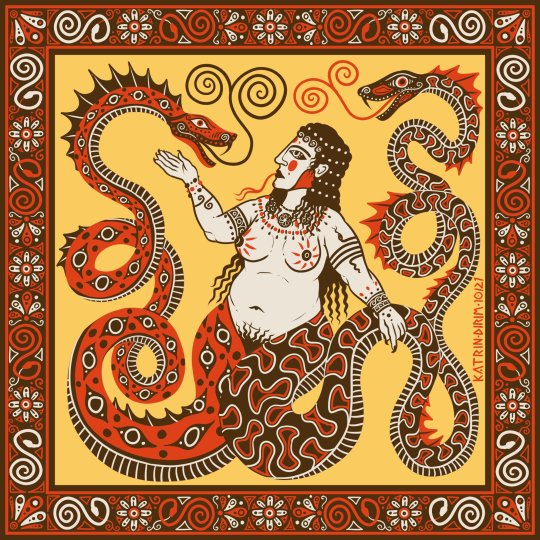
#artists on tumblr#mythologyart#ancient greece#ancient greek mythology#echidna#digital art#illustration#mythical creatures
749 notes
·
View notes
Text
Source: Charriii5
#sonic the hedgehog#sonic and the black knight#shadow the hedgehog#amy rose#silver the hedgehog#knuckles the echidna#blaze the cat#jet the hawk#arthurian legend#arthurian mythology#king arthur#sir lancelot#lady of the lake#nimue#Lady of the Lake#sir galahad#sir percival#sir gawain#sir lamorak#knights of the round table
28 notes
·
View notes
Text

More Greek Myth Au! Yay!
Continued from this post
Shadow as god of the Moon/the hunt, Silver as god of the Sun and light, and Knuckles as the god of war and courage.
#sonic and the three fates au#Shadow the hedgehog#Shadow the hedgehog fanart#Silver the hedgehog#Silver the hedgehog fanart#Knuckles the echidna#Knuckles the echidna fanart#sth#sonic au#sonic fandom#greek mythology au
22 notes
·
View notes
Text
Here are my versions of Typhon/Abzu, Echidna/Tiamat, Ymir, and the Dagda!
WARNING: There are brief mentions of genitalia.



Telaphorszun/Abhejozur is fully capable of threatening serious harm and causing immense dread amongst those he comes across or witnesses him in person. He can be extremely annoying and shameful, which strangely makes him quite bold and startling. Despite his promiscuous nature, he’s very faithful, protective, and somewhat reliant on his mate, Ækhodzinus/Tiamosjur. He occasionally shows his undue and excessive pride in his appearance, prowess, and personal achievements. He has a ravenous appetite, showing no fear in acting upon his violent greediness for food. Telaphorszun/Abhejozur lacks proper consideration for others that aren’t his friends and family, and he possesses a drive to acquire authoritative power. When he’s blinded by pure rage, he falls into unrestrained surrender to impulse without regard, behaving in an uncontrollable way. He’s strict, yet patient and caring towards his children, and he has fairly excellent intelligence and wisdom. His wisdom gives him a better advantage of dealing things with partial cautiousness and passionate diligence.
He’s immensely gargantuan that his head brushes against the stars, possessing the upper torso of a grotesquely muscular man made from freshwater. He has two coiled European ratsnakes in place of legs and his waist is covered in ten bull heads, ten boar heads, ten serpent heads, ten lion heads, and ten leopard heads. He possesses pointed ears, carnivorous teeth, two serpentine tongues, and eyes that flash orange fire with each heartbeat. He has four monza red eyes of wattle sclera, chateau green pupils, and vertical turquoise slits in the middle. Telaphorszun’s/Abhejozur’s four dew-covered massive wings have a gradient of elm, rock spray, and tussock. His filthy old brick hair is tied into five braids and his beard is shaped into deliberate, beautifully-organised curls in tightly-coiled pillars. He wears a rounded eastern blue cap with seven superimposed pairs of platinum ox-horns, gilt-brass armlets, and a golden shawl with fiery silver patterning on the edges and tassels.
His dark aura can generate devastating storms, and he can breath fire, vomit molten lava, and create volcanic rocks that are used to hurl at his enemies. His presence is able to strike fear in the hearts of those who witness him, causing them to flee instantly. The magnitude of his strength can easily cause Earth to tremble and he’s incredibly durable, only being harmed by lightning bolts and tridents. Telaphorszun/Abhejozur is also phenomenally agile and it allows him to dodge most projectiles, and he possesses nearly absolute reflexes, senses, speed, and stamina. He can manipulate avalanches, earthquakes, volcanic eruptions, hydrological disasters, meteorological disasters, wildfires, violent thunderstorms, hurricanes, volcanic eruptions, and floods. He can spew large amounts of venom that can instantly poison two seas, quickly regenerate wounds, and shapeshift into madness-inducing forms. He’s able to use his wings to fly and his vocal chords to produce the sounds of any wild and domesticated animal. He can summon massive sea serpents, bend the fury of storms to his will, and drag enemies to the darkest depths of the ocean. Telaphorszun/Abhejozur has the ability to create lakes, springs, rivers, wells, and other sources of freshwater by manipulating the primordial void.
FAMILY:
Unnamed chthonic and storm god or “Tartarus” (father)
Unnamed earth goddess or “Gaia” (mother)
Ækhodzinus/Tiamosjur (wife)
Unnamed lion-dragon demon or “Ušumgallu” (child)
Unnamed horned snake with two forelegs and wings or “Bašmu” (child)
Unnamed lion-headed storm demon with bird feet or “Ugallu” (son)
Unnamed human-headed dog or “Uridimmu” (son)
Unnamed half-human half-scorpion or “Girtablullû” (son)
Unnamed half-human half-bull or “Kusarikku” (son)
Unnamed nine-headed swamp dragon or “Hydra” (daughter)
Unnamed dragon that guards golden sheep or “Colchian Dragon” (child)
Unnamed hundred-headed dragon that guards golden apples or “Ladon” (child)
Unnamed fire-breathing she-monster or “Chimera” (daughter)
Unnamed malevolent riddle-asker or “Sphinx” (daughter)
Unnamed three-headed giant that owns flesh-eating cattle or “Geryon” (son)
Unnamed monstrous female pig or “Crommyonian Sow” (daughter)
Unnamed giant lion with skin that’s impervious to any weapon or “Nemean Lion” (son)
Unnamed liver-devouring eagle or “Caucasian Eagle” (son)
Kerabhonius (adoptive daughter)
Oyrthalenius (adoptive son)
ALIASES/NICKNAMES:
Typhon
Abzu
The Cries of All Wild Beasts
Hurler of Kindled Rocks
Serpent of the Deep
FUN FACTS/EXTRA INFORMATION:
His closest friend is Ymejahor (or Asgelomur)
He deeply hates Odersvani for killing Ymejahor and Ziesowa for being brutally forced out of his mountainous territory where Mount Olympus is.
He absolutely hates humanity and most members of The Phaethon.
As an Æylphitus, his name means “cyclone, hurricane or smoking one”. In regards to his second name, Abhejozur means “deep water”.
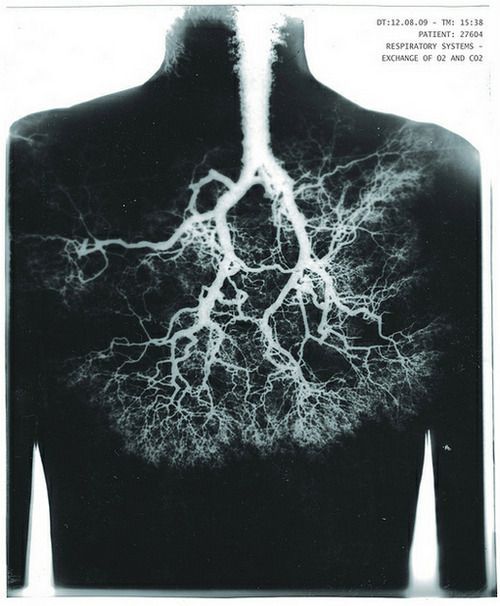


Ækhodzinus/Tiamosjur is cunning with fierce manipulative tactics and a strong sense of prideful independence. She’s capable of showing fury and malignity in her actions, treating those who disrespect or annoy her and her brethren with savage cruelty. She prefers to viciously harm vile men and masculine entities as she views them as being inferior to their female counterparts. However, she possesses more tranquil, compassionate, and generous tendencies compared to her mate, Telaphorszun/Abhejozur. She has a fairly intense bloodlust and a desire for revenge against those who wronged virgin and pregnant women. She possesses a twisted enjoyment in seducing foolish and impressionable mortals, indulging in her unyielding libido. She experiences palpable mood swings from joyous and energetic to miserable and agitated, which somewhat makes her unpredictable and disorderly wild. Ækhodzinus/Tiamosjur occasionally behaves in a noisy and rude manner during public meetings and parties, but it depends on her current mood and appetite.
Her beautiful mesomorphic body with a lack of breasts, four arms, and a rounded belly is covered in a thin layer of fetid feijoa slime. She has swamp green skin and a gumbo cow udder with greyish speckles and faint purple veins. She has glancing hibiscus eyes with emerald pupils and tacha sclera, a forked tongue, four pointed ears, black claws, and fair rosy cheeks. The upper row of yellowed omnivorous teeth has long fleshy fangs where her canines should be, which indicates that she has a venom sac. Ækhodzinus/Tiamosjur possesses a thick, long mass of curly como hair with maroon flush sheen, and her human torso is protruding from a sea dragon. The sea dragon has the blue-green-white colouration of a Lake Kutubu rainbowfish and four shimmering avian luxor gold wings. Their forelegs and hind legs end in the talons of an eagle and their elongated, feathered necks match the hue of the wings. It also possesses ten snarling lioness heads with flesh-devouring, bone-crushing teeth, glowing purplish-red eyes, and upwards-pointed canine ears.
She has manipulative control over sea-scum, salt-marshes, and the corruptions of the earth in the form of rot, slime, polluted waters, illness, and disease. Ækhodzinus/Tiamosjur is able to quickly conceive and give birth to an endless horde of terrible monsters in less than nine months. She can produce a venom that has the power to induce madness, change her size, and use freshwater to create Oceanids and Naiads. She’s practically immortal and ageless, but giants and heifer blood could cause her a sufficient amount of bodily harm. She possesses total authority over all monstrous dragons and snakes, and the ability to quickly regenerate any inflicted wounds. By utilising her massive bird wings, she’s able to fly and deflect magical melee and ranged attacks. She can inflict mortals with any curse imaginable and create rifts in reality to travel across the multiverse. Her aura can distort and warp the weather, crush mountains, and boil seas, and her physical strength, agility, speed, reflexes, senses, and stamina are as good as her mate’s. She can breathe fire and weave magical slime that navigates the labyrinthine paths of heaven, purgatory, and the underworld. Ækhodzinus/Tiamosjur is capable of unleashing chaos during times of upheaval and generating air, electricity, and water.
FAMILY:
Unnamed dangerous sea god or “Phorcys” (father)
Unnamed sea monster goddess or “Keto” (mother)
Telaphorszun/Abhejozur (husband)
Unnamed lion-dragon demon or “Ušumgallu” (child)
Unnamed horned snake with two forelegs and wings or “Bašmu” (child)
Unnamed lion-headed storm demon with bird feet or “Ugallu” (son)
Unnamed human-headed dog or “Uridimmu” (son)
Unnamed half-human half-scorpion or “Girtablullû” (son)
Unnamed half-human half-bull or “Kusarikku” (son)
Unnamed nine-headed swamp dragon or “Hydra” (daughter)
Unnamed dragon that guards golden sheep or “Colchian Dragon” (child)
Unnamed hundred-headed dragon that guards golden apples or “Ladon” (child)
Unnamed fire-breathing she-monster or “Chimera” (daughter)
Unnamed malevolent riddle-asker or “Sphinx” (daughter)
Unnamed three-headed giant that owns flesh-eating cattle or “Geryon” (son)
Unnamed monstrous female pig or “Crommyonian Sow” (daughter)
Unnamed giant lion with skin that’s impervious to any weapon or “Nemean Lion” (son)
Unnamed liver-devouring eagle or “Caucasian Eagle” (son)
Kerabhonius (adoptive daughter)
Oyrthalenius (adoptive son)
ALIASES/NICKNAMES:
Echidna
Tiamat
The Serpent Womb
The Glistening One
Eel of the Stormy Pit
FUN FACTS/EXTRA INFORMATION:
Her husband often runs to her when he has been emotionally insulted or physically hurt.
Unlike her husband, she frankly doesn’t care much about her own children, but she does have a soft spot for Kerabhonius and Oyrthalenius.
She lives in a vast underground labyrinth that’s guarded by fierce dragons and treacherous terrain.
As an Æylphitus, her name means “poisonous viper”. In regards to her second name, Tiamosjur means “sea”.
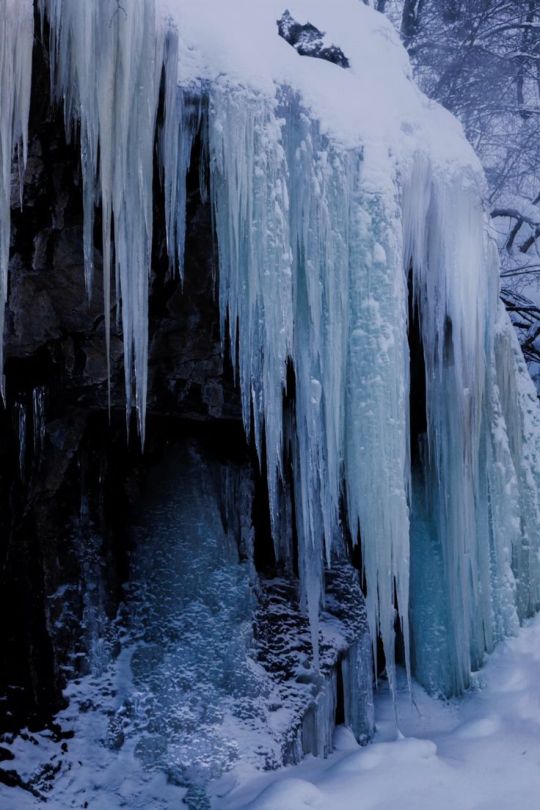


Ymejahor, born as Asgelomur, is motivated by purely animalistic instincts and is ruthlessly determined to get what they desire, uncaring to the plight of others. Due to being primarily moved by instinct, they often come off as disorderly wild and uncontrollable. They’re extremely cruel and violent towards a small portion of Æylphitus and all non-Æylphitus, finding sexual gratification in witnessing their torture, misery, and humiliation. They only act friendly, compassionate, and respectful towards their friends and family as they value their companionship.
They’re a hermaphroditic entity with a height slightly greater than Earth and a disturbingly mesomorphic body type that has a chiselled musculature and well-endowed breasts. They also have a partially rounded belly, a grotesque and spiky penis, and prominent thighs. Their porcelain skin has a hint of Columbia blue and jungle green with protruding red-violet veins on their neck, biceps, triceps, belly, and upper legs. They have icy blue ram horns and long straight, yet messy ghost white hair with streaks of platinum. They possess bloodshot heterochromia eyes, the right is a yellow-orange and the left is lavender with a sky blue pupil. Their crooked omnivorous teeth can crush bone and tree trunks, and their back is covered in snow-topped moss. They have razor-sharp claws and talons of unbreakable ice, a Fjäll cow tail, an aurochs skull necklace, and a loincloth of reindeer fur.
They have incalculable physical and mental condition and the ability to generate ice, snow, poisonous gases, hot embers, and dark voids. They can manipulate air, earth, fire, and water, change their size, and shapeshift into aurochsen, reindeers, giants, humans, and Ufrajozlens. They have a chilling cold aura that can easily create hail storms and blizzards, and freeze living creatures who get close to them. They’re entirely insusceptible to cold and warmer climates, and capable of creating giants from their armpits and lower legs. Due to their insatiable hunger, they can easily consume every known indigestible and digestible substance.
FAMILY:
Unnamed primeval cow or “Auðumbla” (mother)
“Þrúðgelmir” (son)
“Bergelmir” (grandson)
Ysbedulona (descendent)
Oylwaphen (descendent)
Vafjethudnir (descendent)
Jurnesoxa (descendent)
Skojamur (descendent)
Mugnazori (descendent)
Orgezlusa (descendent)
Skudezorvija (descendent)
Ängrebodius (descendent)
Farneboluti (descendent)
Lokjafeni (descendent)
Narfezomuti (descendent)
Valeszowuji (descendent)
Slepzhamonir (descendent)
Huljatemo (descendent)
Fenjuzori (descendent)
Hameluti L’Hrodvatenius (descendent)
Skojazlen (descendent)
Jormeghandius (descendent)
Forszaleti (descendent)
Modjazeri (descendent)
Orsvezhan (descendent)
Unnamed female giant descendent
Galehoziut Farkletombius (descendent)
Galechornius (descendent)
Bolaphurine (descendent)
Hrosapjelf (descendent)
D’Grufhelona (descendent)
Billions of other descendents
ALIASES/NICKNAMES:
Ymir
Aurgelmir
Brimir
Bláinn
Silent Progenitor
Sound of Clay
The Frost Giant
The Gravelly Scream
FUN FACTS/EXTRA INFORMATION:
They’re described as the first living creature who was the ancestor of all giants, being born from a yeasty venom that dripped from an icy river.
Their flesh formed the earth of Pangaea, their blood purified into bodies of water, their bones became the mountains, their hair created the trees, their helped to shape the clouds, their skull was used as sturdy protection for the sky, and their eyebrows were transformed into leylines as well as mortal and spiritual boundaries. Their jaw and teeth were broken down into rocks and pebbles, their right eye became the Sun, and their left eye was changed into Earth’s moon.
It’s commonly believed by many that their flesh and blood aided in the creation of the dwarves.
As an Æylphitus, their name means “to whine, hermaphrodite or twin”. In regards to their second name, Asgelomur means “shouting clay, sand-bellower or gravel-roarer”.



Dagtezobius is slovenly lecherous and oafish, being a result of his fun-loving, mischievous, and combat-oriented attitude. As a result of his strong fatherly instincts, he’s often gentle, friendly, and compassionate to those he views as family and friends. He only flies into a fit of rage when they have been hurt or wrongly abused, annihilating the perpetrator that’s responsible for their anguish. Whenever he feels threatened or frustrated, he comes off as strangely serious and fearsome. He’s fairly versatile, allowing him to utilise a variety of personal skills and adjust to new conditions. He places genuine value on humility, honesty, faithfulness, independence, and wisdom, which he strictly applies to his life choices and relationships. Dagtezobius seems to be full of clever humour and skilled at gaining an advantage through deceit, having a very good understanding of situations and possibilities. He’s eager to help in a beneficial and advantageous way, and noticeably adventurous, willing to take risks and try new methods.
He’s as tall as the largest mountain, possessing a trapezoidal endomorphic body with robust limbs, chiselled pecs, broad shoulders, a prominent belly, a well-endowed penis, four arms, and Irish elk antlers. His shoulder-length, curly hair and long, unruly beard are a shimmering maroon oak with streaks of old brick. He even has thick, bushy eyebrows and curly pecto-sterno-infraclavicular and sagittal hair of the same hue. He has heterochromia eyes, the right is sky blue and the left is jade, and a fair complexion with reddish-brown freckles on his face, neck, and hands. He wears a woollen saffron-yellow cloak, an ill-fitting linen copper rust tunic, and Connemara pony fur boots. He dons a knee-length pleated goblin green kilt with black, white, hippie blue, and gold stripes. In order to hold Dagtezobius’ kilt in place, he has a cow leather belt with a golden buckle, a red fox tail, and a lucky rabbit’s foot. He carries a shepherd's crook named Lorg Mór, a mace of dual nature named Lorg Anfaid, and a richly ornamented harp of oak named Uaithne. Uaithne could place the seasons in proper order and even command the wills and emotions of sentient beings. The head of Lorg Anfaid can slay nine men in a single swing, while its handle could revive the slain through physical touch. He also has a bottomless cauldron that’s tied to his back named Coire Ansic, which produces a bountiful feast, never runs empty, and acts as a portal to other dimensions.
He manipulates size, fertility, agriculture, manliness, druidry, wisdom, war treaties, traditional music, life, death, the weather, crops, time, and the four seasons. As a result of his absolute charisma, he has the ability to command the respect and admiration from both Æylphitus and mortals alike. He possesses omnicompetence, absolute strength, and total knowledge of the earth and fire. Dagtezobius has a perfected mastery over agriculture, meteorology, alchemy, astrology, conjuration, divination, herbalism, necromancy, music, and the art of war. He can prevent the sun from setting by holding it in place for nine months and summon a drift of pigs and a herd of cows. He can see into the future by using the movements of piglets to predict the fate of the world, and can cause tremors and earthquakes with a mere stomp.
FAMILY:
Unnamed goddess of motherhood and agricultural prosperity or “Danu” (mother)
Kaleszochi Moraghuine (ex-wife)
Ayngezobius (son)
Brigedonus (daughter)
ALIASES/NICKNAMES:
The Dagda
Fatherly Horseman
Striking Creator
Horned Man
The Fiery One
The Fertile One
Man of the Peak
Mighty Lord of Great Knowledge
FUN FACTS/EXTRA INFORMATION:
His domain is an infinite series of Neolithic mounds, having an orchard that bore perennial sweet fruit and being aligned with the rising sun during winter solstice.
He has two pigs, one of which was always growing whilst the other was always roasting.
He also has a black-maned heifer that causes all cattle to graze by calling for its calf.
As an Æylphitus, his name means “good god”.
His sacred animal is a pig
A cauldron, mace, and harp are his sacred symbols.
#writerscorner#writing#creative writing#original character#personality#physical appearance#outfit#abilities#power#deity#gods and goddesses#god#goddess#greek mythology#greek gods#titan#typhon#echidna#mesopotamian mythology#abzû#tiamat#norse mythology#jotun#giant#ymir#celtic mythology#irish mythology#the dagda#fun facts#extra information
10 notes
·
View notes
Note
I imagine typhon to be a bit more noble compare to the other gods? He probably just want to protect his family
I actually only know the myths about Typhon manhandling or attempting to man handle Zeus so idk what his relationship with his family is like.
9 notes
·
View notes
Text

Echidna and her lions 🥀🐍🦁🖤
The Garden of Bomarzo / Parco Dei Mostri 👹💀🌳🍃
Bomarzo, Italy (April 10, 2019) 🇮🇹✨
Wikimedia Commons
#echidna#lions#statues#greek mythology#bosco sacro#garden of bomarzo#parco dei mostri#italy#sculptures#italian sculpture#art#dark art#monsters#demonolatry#theistic satanism#spiritual satanism#dark pagan#dark paganism#satanic witch#witchcraft#demons#paganblr#witchblr#left hand path#occult#mannerism#mannerist art#16th century art
23 notes
·
View notes
Text
So, over the myths, the gods have cursed like countless mortals to be monsters of some sort. Arachne, Medusa (sometimes) and the like, specifically. But Typhon and Echidna and the 'Mother and Father' of monsters. So I vote that each time they hear about a mortal being turned into an immortal monster, they just call each other
"hey babe, new kid. Some girl bragged about being better than Artemis at hunting."
"Oh, word? Alright. I'll go find her. What's her name?"
And then they just adopt/kidnap the new monster. That's where 70% of their kids come from.
#greek mythology#typhon#echidna#not the animal#i mean the mythological person#sorry guys#arachne#medusa#loosely inspired by#percy jackon and the olympians#and#immortal fenyx rising#artemis#no hate thats just who i happened to think of
12 notes
·
View notes
Text
Hear me out, Knuckles as Ares and Rouge as Aphrodite, Platonic or romantic, just think about it
#sonic the hedgehog#sonic fandom#rouge the bat#knuckles the echidna#mythology#Does anyone know if it is Greek or Roman mythology? I always confuse them#ares#aphrodite
10 notes
·
View notes
Text
Echidna (my interpretation)
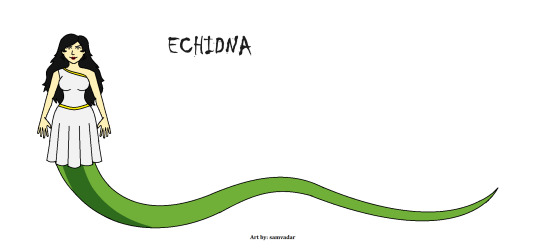

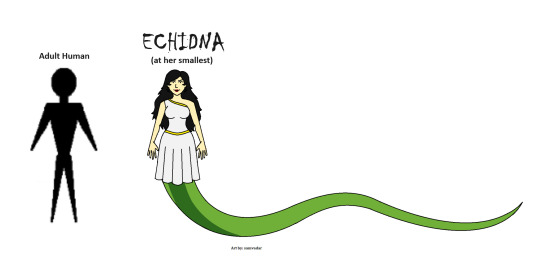


Here we go. Echidna, the mother of all monsters. I kept it simple, half snake. half beautiful woman. I also gave her the power to change her size so it would be easier for her to wreak havoc and be with her horrifying hubby, Typhon.
#ooc post#my art#greek mythology#echidna#echidna the mother of all monsters#typhon#typhon the father of all monsters#mount olympus#the olympians#zeus#poseidon#hades#hercules#herakles
7 notes
·
View notes
Text
There’s this myth recorded by Herodotus that Heracles went to sleep while doing his labours and woke up to find his horse was stolen by an echidna, a creature that was a woman from the ass up and snakes from the legs down.
She offered to return the horse in exchange for sex. Heracles agreed, the two stayed together long enough for Echidna to give birth to three sons, and one of them went on to found the Scythians.
Herodotus never confirmed the echidna was Echidna, and he was probably conflating characters from Greek mythology with figures from the Scythic religion, where the Snake Legged Goddess is a major recurring figure, but I choose to believe this was the same Echidna who was married to Typhon and was the mother of monsters.
She’s a milf, she’s single, and she’s ready to mingle.
208 notes
·
View notes
Text
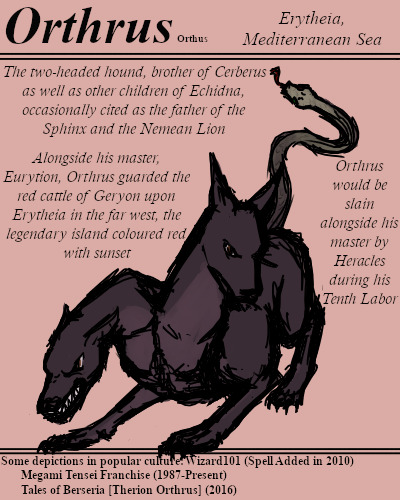
An ill-fated guard dog, guardian of Geryon's red cattle. He was ultimately one of Echidna's many children to fall in battle against the immensely powerful Heracles.
#BriefBestiary#bestiary#digital art#fantasy#folklore#legend#myth#mythology#orthus#orthrus#greek mythology#eurytion#geryon#heracles tenth labor#erytheia#monster#children of echidna
30 notes
·
View notes
Text
Seeing an entire episode centered around Echidna and the Chimera called to my attention just how brief the encounter in the book was. Percy meets them in mortal guise, they reveal themselves and attack, Percy is poisoned and the Gateway Arch is damaged, and Percy drops out and oh hey he survived the fall and the water healed him and he can breathe underwater moving on. It was about as long as the scene at the top of the arch was in the show.
#percy jackson and the olympians#percy jackson#echidna greek mythology#chimera#pjo#pjo series#pjo disney+#pjo spoilers#there was one thing that the book had that the show didn't: “You mean like the anteater?”#of all the lines to not include or adapt#there was a nod to the pink poodle that i honestly didn't remember which was left out of the show#it was a joke that was referenced in the sun and the star but they couldn't be bothered to include it in the show?#granted it would have detracted from the psychological menace that echidna carried here
9 notes
·
View notes
Text
What if Echidna tried exploiting Grover’s fear of his kind disappearing—something they have in common— and ultimately turning him against his friends?
Although less dangerous, Satyrs were greatly feared in mythology much like monsters are. Echidna would take full advantage of that (“Monster? Such a weird word…”). She could remind Grover how society long feared and eradicated both his kind and hers, ask why he’s helping the demigods responsible, rub in how they both should be against demigods, basically try making him join her.
#echidna could’ve been the Darth Vader to Grover’s Luke Skywalker#this episode was so good I rewatched it twice in a row#Disney#disney+#percy jackson#Percy Jackson and the Olympians#Percy Jackson episode 4#Grover#grover underwood#echidna#greek mythology#classical mythology
10 notes
·
View notes